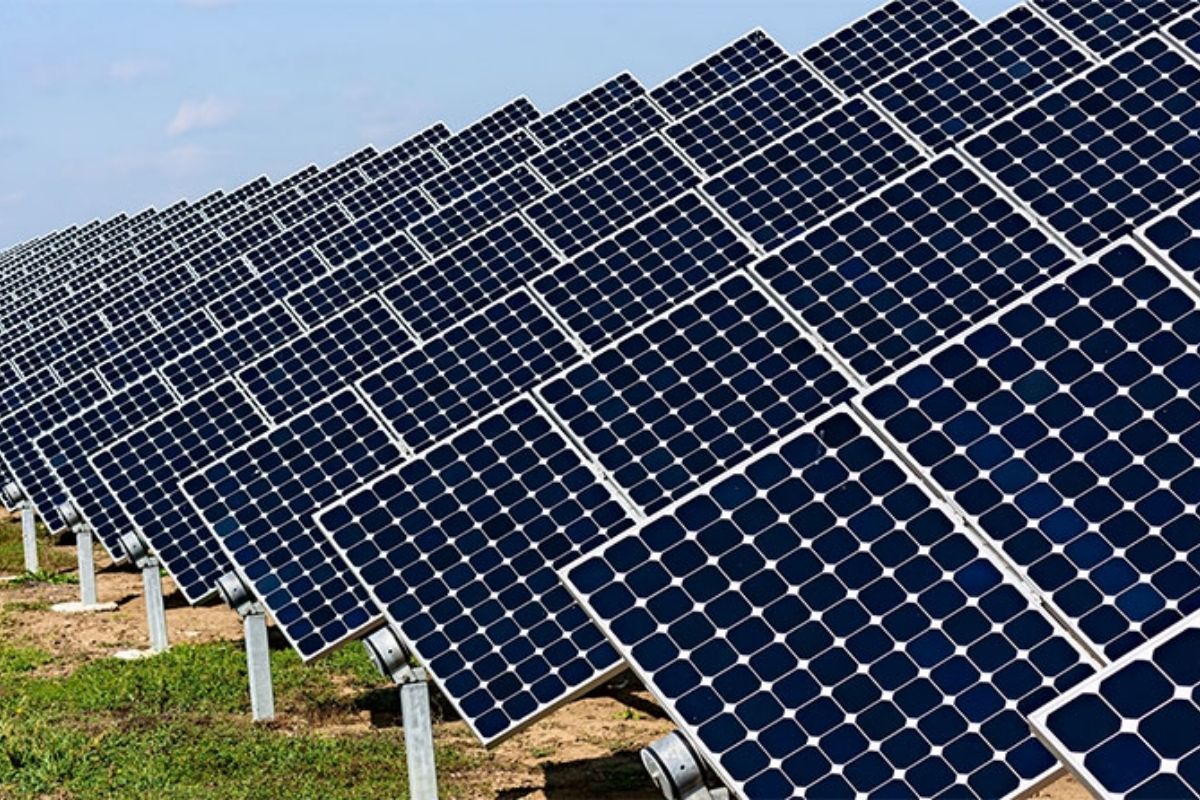In a world on the cusp of energy transformation, India emerges as a beacon of hope, basking in the radiance of the sun’s potential. Imagine a future where the vast expanse of solar panels across the Indian landscape silently powers our progress, breaking the chains of fossil fuel dependency. This revolution is not just about energy; it’s about resilience, sustainability, and a brighter future for generations to come. Let’s dive deep into the burgeoning solar energy market in India, unraveling its growth trajectory, decoding its potential, and exploring the art of predicting its future.
Table of Contents
The Rise of Solar Energy Market in India: A Glimpse into the Present
As of 2023, India’s solar energy market is no longer an emerging concept; it’s a thriving sector contributing significantly to the nation’s energy landscape. The numbers speak for themselves – the total installed solar capacity has surged past USD 240.42 billion, growing at an impressive CAGR of 35.24% from 2021 to 2026. This staggering growth encompasses utility-scale solar projects, rooftop solar systems, and solar parks, signifying the monumental potential of solar power in India.
Several factors have converged to bring us to this pivotal moment. Government support, a surge in investments, and advancements in technology have paved the way for solar energy to shine. The ambitious target of achieving 450 GW of solar capacity by 2030 adds another layer of significance to this evolution.
A Comparative Insight: Solar Energy vs. Other Renewables
In the realm of renewables, solar energy takes center stage in India’s energy transition. It stands tall alongside wind, hydropower, and biomass. While each source has played a pivotal role, solar energy’s growth is particularly remarkable. Wind energy, with its favorable conditions along coastlines and in specific states, boasts an installed capacity of 42,633 MW in 2023. Hydropower, drawing from India’s abundant water resources, contributes significantly with an installed capacity of 178.79 GW. Biomass, utilizing organic matter for energy, is at 10,205.61 MW as of FY 2022.
However, it’s the solar energy market that has outshone the rest, surpassing its counterparts in size. This leap can be attributed to a strategic focus on solar energy by the government, advancements in technology, and the country’s geographical advantage.
Unraveling Growth Trends: A Solar-Powered Future Beckons

Diving deeper into the growth trends, we witness a cascade of transformations that pave the way for a solar-powered future:
1. Rapid Capacity Addition: India’s solar energy sector is on a rapid growth trajectory, buoyed by the government’s commitment to achieving 175 GW of renewable energy capacity by 2022. This impetus has catapulted solar energy into the limelight.
2. Costs on the Decline: Technological advancements, economies of scale, and competitive project auctions have collectively driven down the cost of solar power generation. This reduction stems from falling prices of panels and components, bolstered by supportive governmental policies.
3. Surge in Solar Installations: Solar installations across India have witnessed a surge, with solar parks and farms cropping up in multiple states. Simultaneously, commercial and industrial rooftop installations are also gaining momentum.
4. Government’s Role: The Indian government’s unwavering commitment is evident through subsidies, tax breaks, and initiatives like the Solar Energy Corporation of India (SECI) and the National Solar Mission. These incentives have facilitated the market’s growth, making it an attractive avenue for investors and businesses.
5. Renewable Energy Shift: The global shift towards renewable energy due to environmental concerns and the carbon footprint of conventional sources has further accelerated the adoption of solar energy.
6. Investment Opportunities: With the solar energy sector gaining investor interest, solar energy stocks and related infrastructure are witnessing remarkable growth in their stock prices. This flourishing investor sentiment attests to the sector’s potential.
Shaping the Future: Predicting Solar Energy’s Trajectory in India
Predicting the future of the solar energy market in India is an exercise in optimism, bolstered by concrete factors. Continued government support, favorable policies, and falling technology costs are expected to drive substantial growth. The goal of reaching 450 GW of solar capacity by 2030 is within reach, further solidifying India’s position as a solar energy leader.
As technology continues to evolve, energy storage solutions and advancements in solar panels will enhance reliability and efficiency, making solar energy a staple in India’s energy mix. Predictive models, scenario planning, and a keen eye on policy changes will allow us to forecast this trajectory accurately.
FAQs
- Can individuals invest in the solar energy market in India?
Absolutely! Individuals can invest in the solar energy market through options like rooftop solar installations, solar bonds, or by investing in solar energy companies.
- What are the government incentives available for solar energy investments?
The Indian government offers various incentives to promote solar energy investments, including subsidies, tax breaks, and renewable purchase obligations (RPOs) for utilities.
- How does technology contribute to leveraging solar energy market growth in India?
Technology plays a pivotal role in solar energy growth by enhancing solar panel efficiency, developing energy storage solutions, enabling smart grid integration, and improving remote monitoring for increased project performance and profitability.
- What are the key factors driving the rapid growth of the solar energy market in India?
Factors such as government initiatives, falling technology costs, advancements in solar technology, and rising environmental awareness are driving the rapid growth of India’s solar energy market.
- How does solar energy compare to other renewable energy sources in India?
Solar energy’s market size has surpassed that of wind, hydropower, and biomass due to favorable government policies, technological advancements, and geographical advantages.
Conclusion: A Solar-Powered Future Awaits
In the grand scheme of India’s energy landscape, solar power emerges as the shining star, illuminating the path toward sustainability and energy independence. The solar energy market’s growth, driven by government support, technological leaps, and investor confidence, bodes well for the nation’s future. Predicting this growth involves a delicate balance of analyzing data, understanding policy shifts, and staying abreast of technological advancements. As solar panels gleam across the nation, a brighter, cleaner, and more sustainable future beckons – powered by the mighty sun.
















